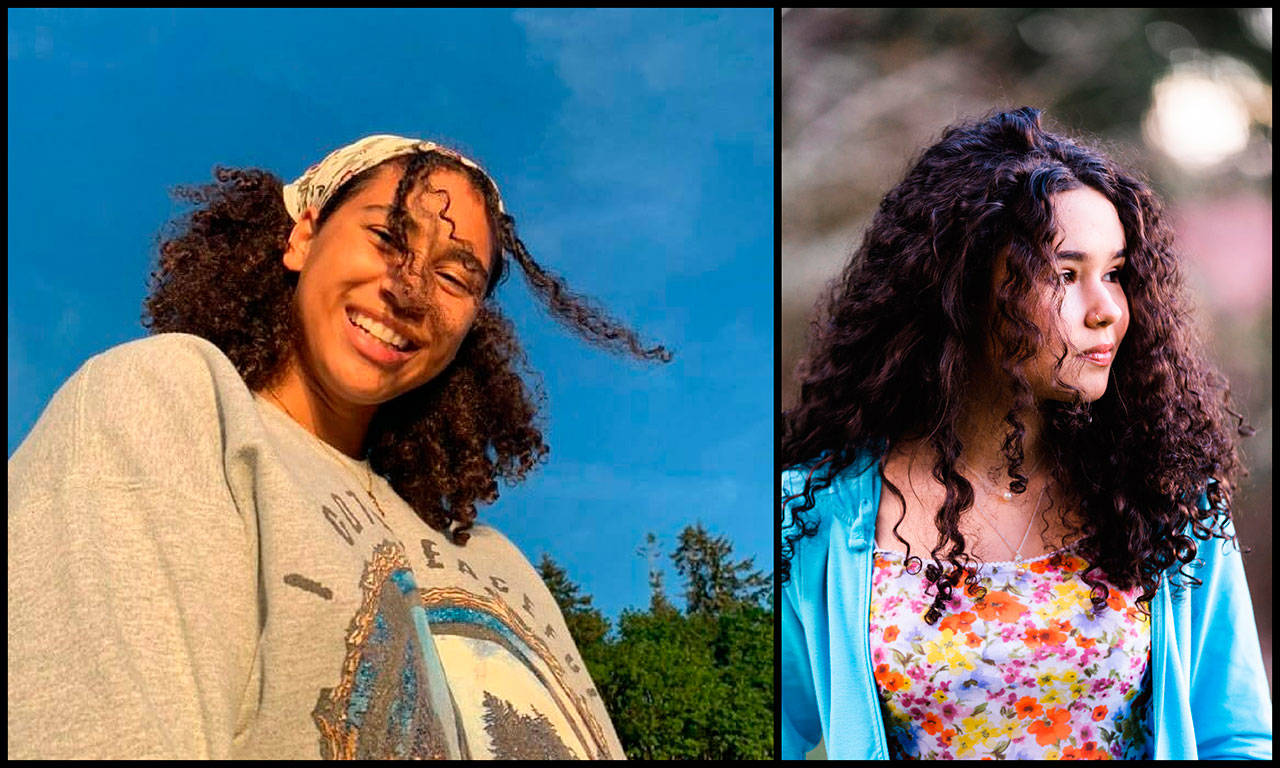By Susan McCabe
For Vashon Island School District
Currently, 25% of Vashon High School (VHS) students identify as people of color (POC). That statistic is also roughly representative of the VHS Racial Equity Pack (REP), a cadre of students whose goal is to promote racial equity and inclusion at the school.
REP got its start late in 2019, so the group was able to launch their work in person with at least one Martin Luther King Day event and weekly meetings supported by faculty advisors Karah Weber, science teacher, and Kristen Adams, an art teacher.
Weber calls REP “a vessel for discussion, communication and learning.”
REP aims its consciousness-raising at staff as well as students. In fact, one of the group’s priorities is to encourage a teacher population mix that matches that of VHS students. Currently, the VHS staff is about 99% white; Adams, Weber and the students in REP want to see that change.
As Weber points out, it comes down to pro-active work aimed at diversifying the staff roster. That means reaching out to teachers of color at job fairs, through racially mixed educators’ organizations and training programs in the region. Adams believes that, if district administrators were to build relationships with these organizations, they’d have more teachers of color apply for Vashon positions.
The students in REP want to hold administrators accountable for prioritizing the creation of a diverse staff roster. Student REP member Aliya Ricks sees an opportunity for the 2022 school year to fill multiple teacher vacancies with educators of color. And along with other REP members, Ricks also wants more diversity in their curricula as well.
“When we’re learning about African culture, for instance, we just learn it from slavery in the US,” she said, saying it was important to learn about the diversity of the African continent and the diversity of Black Americans as well.
Ricks and her fellow REP member, Grace Smith, have spent their entire educational careers in Vashon schools. Smith, who says she is of mixed race and “white-passing,” reports no racist micro-aggressions on herself, but she’s witnessed racist jokes and racial slurs perpetrated on other students of color.
“In the past year,“ she said, “I’ve noticed things improving — people are willing to learn and change.”
Some of that improvement might result from white students’ awareness of the Black Lives Matter movement, the many news stories of police brutality against people of color and more information about systemic racism in the media.
Weber and Adams, purposely or not, have used the general atmosphere to support their work with REP students.
Adams said she listens a lot to REP students, takes notes, provides support and structure for their ideas and acts as a liaison to the school’s faculty racial equity team.
REP students have created and delivered about five professional development sessions for VHS faculty this year alone. They deliver these sessions during Homeroom periods called SMART periods. REP members aim to help staff and other students recognize and own their own biases.
“Accepting that, being aware of it is one of the first steps to combat systemic racism,” said Weber. “These truths are not attacks on character or goodness; they’re something we must be aware of before we can try to dismantle systemic racism.”
The REP group has grown in the past year, adding another five members. It’s in these SMART periods that students share their experiences, expose biases and grapple with them in difficult conversations.
Advisers Weber and Adams say they work hard to make these SMART periods safe places for students of color to address issues of race “… but we’re not always sure they’re fully supported in their classrooms.”
Part of REP’s work is to change that.
REP student Ricks reports that in the past when she’s experienced racist treatment in the school and reported it to staff, “I got pulled out of class and questioned to make sure I wasn’t lying or bluffing. So, I stopped going to staff about those things and I think it’s the same for a lot of students of color.”
Ricks joined REP so she could hear and share other people’s stories, be able to hear other viewpoints and share facts about racial equity at VHS. To raise empathy among students, Ricks and the REP team recently did a creative visualization with white students that put them in a public place surrounded by people who made them uncomfortable. Then they sought the students’ feedback, asking if their skin were a different color — not white — how would they behave differently. REP has conducted similar presentations with VHS staff.
Ricks said, “I don’t want to undermine other people’s experiences; don’t want to dismiss all the difficulties in their lives. I just want them to know that students of color have similar difficulties and they have the additional impacts of racism to carry.” Both sophomores, Ricks and Smith plan to stick with REP.
All this hard work and these difficult conversations are beginning to bear fruit.
“Most of my classmates aren’t racist; I’ve seen students caring more about racism and wanting to get involved. Kids are more willing to have the uncomfortable conversations. And, I’ve seen the micro-aggressions tone down,” said Ricks.
She and Smith are grateful to their faculty advisors, Weber and Adams.
Smith said, “It’s been nice to hear different experiences and perspectives. I think we can open a lot of people’s minds.”


